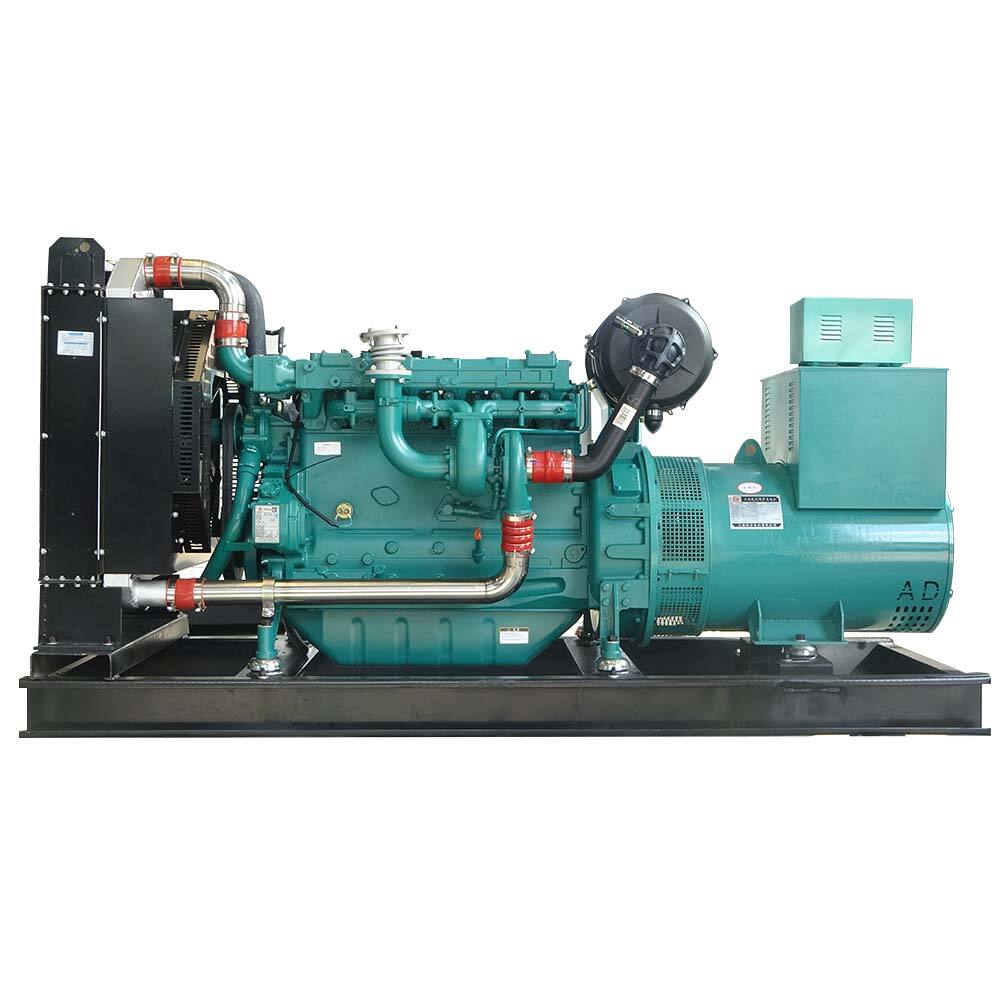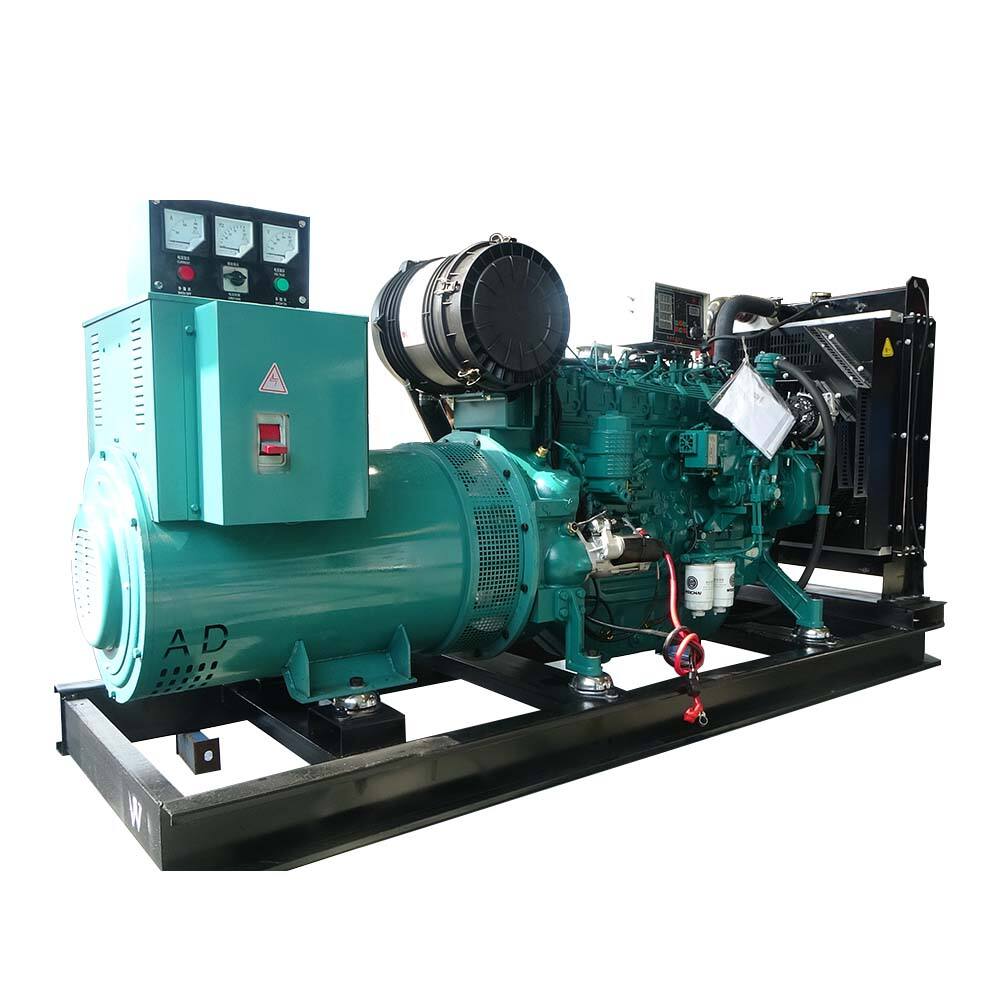Die Voordele van Draagbare Kragopwekkers in Noodtoestande
In tye van krisis - of dit nou natuurramppe soos orkanne, vloede of bosbrande, of onverwagte gebeure soos roosterstoringe - kan toegang tot elektrisiteit die verskil beteken tussen veiligheid en gevaar. Draagbare kragopwekkers tree op as lewenslyne in hierdie situasies deur betroubare energie te verskaf wanneer die hoofkragnetwerk misluk. Anders as stasionêre back-upstelsels, draagbare kragopwekkers is lig van gewig, mobiel en veelsydig, wat dit onmisbaar maak vir huishoudings, noodgevalle en gemeenskappe. Hul vermoë om elektrisiteit op aanvraag te lewer, verseker dat kritieke stelsels bly werk, daaglikse behoeftes bevredig word en lewens beskerm word. Kom ons verken die sleutelvoordele van draagbare kragopwekkers in noodgevalle.
Versekering van Toegang tot Kritieke Mediese Toerusting
Een van die belangrikste rolle van portabele kragopwekkers in noodgevalle is om lewensondersteunende mediese toerusting aan te dryf. Vir individue met chroniese siektes of gestremdhede kan 'n kragonderbreking katastrofies wees sonder toegang tot toestelle soos suurstofverrykers, CPAP-masjiene of insulienskoelkaste. Portabele kragopwekkers verskaf 'n betroubare energiebron en verseker dat hierdie toestelle ononderbroke funksioneer.
Byvoorbeeld, gedurende 'n swartdood as gevolg van 'n orkaan, kan 'n draagbare kragopwekker 'n suurstofverryker laat bly werk, en so asemhalingsbenoudheid vir 'n pasiënt met COPD voorkom. Op dieselfde wyse kan gesinne met babas wat op inkubators of voedingspompe staatmaak, draagbare kragopwekkers gebruik om hierdie lewensbelangrike toestelle aan te hou totdat die netkrag herstel is. In landelike gebiede, waar mediese fasiliteite ver mag wees, stel draagbare kragopwekkers gemeenskapsgesondheidsenters in staat om noodsaaklike toerusting soos defibrillators of bloeddrukmonitors te bedryf, en sodoende basiese gesondheidsorg toeganklik hou tydens krisisse.
Noodmediese spanne is ook afhanklik van draagbare kragopwekkers. Ambulansies en veldhospitale gebruik dit om strekers, beligting en mediese gereedskap op rampoorte van krag te voorsien, waar netelektrisiteit dikwels nie beskikbaar is nie. Hierdie mobiliteit stel eerstehulpdienslewers in staat om tydelike versorgingsstasies vinnig op te rig en sodoende hul vermoë om gewonde persone in ontoeganklike areas te behandel uit te brei.
Handhaaf Kommunikasie en Inligtingstoegang
Tydens noodgevalle is kommunikasie sleutel tot die koördinering van verligtingspogings, die deel van opdaterings en hulpsoektogte. Portabele kragopwekkers verseker dat kommunikasietoestelle bedryfsgetrou bly en individue en gemeenskappe met mekaar verbondene hou.
Seltone, radiostations en rekenaars is afhanklik van elektrisiteit, en portabele kragopwekkers kan hierdie toestelle laai, wat mense in staat stel om nooddiens te kontak, weerwaarskuwings te nagaan of geliefdes op die hoogte te hou van hul veiligheid. Tydens langdurige kragonderbrekings kan 'n portabele kragopwekker 'n Wi-Fi-router bedryf en sodoende internettoegang handhaaf – 'n kritieke hulpbron vir toegang tot werklike nuus, ontruimingskaarte of ramprespons-toepassings.

Vir noodhulpteams is draagbare kragopwekkers ewe noodsaaklik. Hulle voorsien krag aan tweerigting-telefone, satellietfoon en bevelsentrum-toerusting om samewerking tussen spanne op die grond, lugsteun en hoofkwartier te verseker. In gebiede waar selfoonnetwerke of toringe beskadig is, maak die opwekkers dit moontlik om tydelike kommunikasie-sentra in te stel wat die verbindingsleemtes oorbrug wat reddingsoperasies kan vertraag.
Behoud van Voedsel, Water en Sanitasie
Langdurige kragonderbrekings bedreig toegang tot skoon water en veilige kos, en verhoog die risiko van siekte en dehidrasie. Draagbare kragopwekkers speel 'n sleutelrol in die behoud van hierdie lewensbehoeftes en help om openbare gesondheid tydens krisisse te handhaaf.
Vrieskaste en vrieskaste maak staat op elektrisiteit om voedsel te bewaar. 'n Draagbare kragopwekker kan hierdie toestelle aan die gang hou en voorkom dat bederfbare items soos vleis, suiwelprodukte en medisyne wat koud gehou moet word, verlore gaan. Dit verminder nie net afval nie, maar verseker ook dat gesinne gedurende lang noodgevalle toegang tot voedsame kos het en nie op onvernietigbare rantsoene moet staatmaak wat noodsaaklike voedingstowwe kan ontbreek nie.
Draagbare kragopwekkers voorsien ook krag aan waterpompe en filtrasie stelsels. In oorstromingsgebeurde gebiede, waar munisipale watervoorsiening besmet kan wees, kan kragopwekkers pompe gebruik om toegang tot grondwater te verkry of UV-filtrasie-toestelle gebruik wat water vir drink- en sanitasie gebruik. Dit voorkom dat waterverwante siektes soos cholera versprei, wat dikwels ná natuurrampe toeneem. Daarbenewens kan kragopwekkers draagbare toilette of rioolpompte aansture, wat basiese sanitasie in tydelike skuilings handhaaf en die risiko van infeksie verminder.
Verskaffing van Verligting en Verwarming/Verkoeling
Donkerte en ekstreme temperature tydens noodgevalle skep bykomende gevare, van ongelukke wat deur swak sig veroorsaak word tot gesondheidsrisiko's soos hipotermie of hitteslag. Portabele kragopwekkers bekamp hierdie uitdagings deur verligtings- en klimaatbeheerstelsels aan te dryf.
LED-ligte, aangedryf deur portabele kragopwekkers, verlig huise, skuilplekke en ontruimingsroetes, en verminder die risiko van struikel, val of beserings in swak verligte omstandighede. Dit keer ook roof en bied 'n gevoel van sekuriteit vir gesinne wat tydens krisisse in hul huise vasgevang is. Vir eerstehulpverskaffers verbeter goed verligte areas sigbaarheid wanneer oorlewenden gesoek word of infrastruktuur herstel word.
In streke met ekstreme weer kan draagbare kragopwekkers ruimteverwarmers, waaier of lugversorgingsisteem aanjaag. Tydens winterstorme kan 'n opwekker-aangedrewe verwarmer voorkom dat pype vries en hou dit kwesbare bevolkingsgroepe (kinders, ouerwordendes) warm. Tydens hittegolwe verminder lugversorging die risiko van oophoping van hitte, veral vir dié met gesondheidsprobleme wat hulle meer gevoelig maak vir hoë temperature. Die vermoë om binneklimaat te beheer is krities om gesondheid en gemak te behou wanneer die stroomnetwerk uitval.
Ondersteuning van Gemeenskap en Infrastruktuur Herstel
Buite individuele huise speel draagbare kragopwekkers 'n sleutelrol in gemeenskapsvlak herstelwerkzaamhede na noodgevalle. Plaaslike regerings, skole en nie-winsgewende organisasies gebruik dit om tydelike skuilplekke te vestig, waar gesinne wat hul tuiswoon verloor het, toegang tot elektrisiteit kan kry vir die oplaai van toestelle, kook en verligting. Hierdie skuilplekke word sentrums vir gemeenskaplike ondersteuning, waar voorsieninge en inligting versprei word - alles moontlik gemaak deur draagbare kragopwekkers.
Infrastruktuurherstelspanne is ook afhanklik van draagbare kragopwekkers. Hulle voorsien krag aan gereedskap soos hamers, lasapparate en sae, wat werkers in staat stel om rommel te verwyder, aanskakel van kraglyne te herstel of paaie te repareer. Byvoorbeeld, na 'n tornado, kan 'n draagbare kragopwekker 'n kettingsaag dryf om valbome wat noodroetes blokeer te verwyder, en so die proses versnel om toegang tot getroffene buurte te herstel.
Klein besighede, wat dikwels die ruggraat van plaaslike ekonomieë vorm, profiteer ook van draagbare kragopwekkers. Restourante kan dit gebruik om vriesmasjiene aan die gang te hou en warm maaltye aan gemeenskapslede te bedien, terwyl apteke koelbewaring vir entstowwe en medisyne kan handhaaf. Dit help nie net besighede om die krisis te oorleef nie, maar verseker ook dat noodsaaklike dienste beskikbaar bly, wat die algehele herstel van die gemeenskap versnel.
Buigsaamheid en Mobiliteit in Dinamiese Noodtoestande
In teenstelling met stilstaande noodgebruik-opwekkers, wat vasgemaak is aan 'n enkele ligging, bied draagbare kragopwekkers onoortrefte mobiliteit – 'n kritieke voordeel in vinnig veranderende noodsituasies. Hul kompakte grootte en ligte ontwerp (baie modelle weeg minder as 100 pond) maak dit moontlik om hulle met 'n motor, vragmotor of selfs met die hand na afgeleë gebiede te vervoer.
Hierdie mobiliteit is veral waardevol tydens natuurrampe wat groot gebiede affekteer. Byvoorbeeld, tydens 'n bosbrand kan ontruimingsroetes skielik verskuif, en 'n draagbare kragopwekker kan maklik van die een skuilplek na 'n ander verskuif word soos nodig. In vloedgebiede, waar paaie ontoeganklik is vir groot voertuie, kan kleinere draagbare kragopwekkers deur reddingspanne saamgedra word om elektrisiteit aan families wat vasgekeer is of geïsoleerde gemeenskappe te voorsien.
Draagbare kragopwekkers kom ook in 'n verskeidenheid groottes en kraguitsette voor, vanaf 1000-watt modelle wat geskik is vir die oplaai van toestelle tot 10 000-watt eenhede wat in staat is om gelyktydig verskeie toestelle te bedryf. Hierdie veelsydigheid stel gebruikers in staat om die regte opwekker vir hul behoeftes te kies, of dit nou die voorsiening van 'n enkele tUIS of 'n klein gemeenskapsentrum is. Sommige modelle het selfs dubbelfuelvermoë (wat op petrol of propaan werk), wat verseker dat hulle kan funksioneer selfs indien een brandstofbron skaars is.
VAA: Draagbare Kragopwekkers in Noodtoestande
Watter grootte draagbare kraggenerator het ek nodig vir huisnoodgevalle?
'n 3 000–5 000 Watt-opwekker kan noodsaaklike toestelle aan dryf: 'n yskas, 'n paar ligte, 'n waaier en 'n selfoonlader. Vir mediese toerusting soos suurstofverrykers, kies 'n model van 5 000+ Watt om hoër kragbehoeftes te hanteer. Bereken altyd die totale Watt- behoefte (som van alle toestelle) voordat jy aankoop.
Hoe lank kan draagbare kragopwekkers in noodtoestande aanhoudend werk?
Dit hang af van die brandstofkapasiteit en las van die opwekker. 'n 5-gallon petrolgenerator wat teen 50% las werk, hou gewoonlik 8–12 ure. Propaanmodelle kan langer loop (12–24 ure) met groter tenks. Vir verlengde uitvalle, berg ekstra brandstof veilig en vul die opwekker buite aan om koolstofmonoksied-risse te vermy.
Is draagbare kragopwekkers veilig om binne te gebruik tydens noodtoestande?
Nee. Draagbare kragopwekkers vrystel koolmonoksied (CO), 'n giftige gas sonder reuk of kleur. Moenie dit binne huise, garasies of tente gebruik nie—selfs met oop vensters. Plaas die opwekkers ten minste 20 voet van geboue af, met die uitlaat na weg van vensters en inlaatgate. Gebruik 'n CO-detektor binne om u te waarskuw teen gevaarlike vlakke.
Kan draagbare kragopwekkers in nat kondisies gebruik word, soos vloede of reën?
As opwekkers aan water blootgestel word, kan dit elektrodesie of skade veroorsaak. Gebruik 'n waterdigte opwekkerdeksel of plaas die opwekker onder 'n stewige, verhoogde skuiling (soos 'n afdak) om dit teen reën of vloeding te beskerm. Maak seker die area is goed geventileer om te voorkom dat CO ophoop.
Hoe moet ek 'n draagbare kragopwekker onderhou vir noodgevalvoorbereiding?
Laat die generator elke 3 maande vir 15–20 minute loop om die enjin gesmeerd te hou. Stoor dit op 'n droë plek met 'n vol petroltenk (behandel met stabiliseerder) om degradasie te voorkom. Kontroleer olievlakke gereeld en vervang filters jaarliks. Om 'n byspaarvonkprop en brandstofilter byderhand te hê, verseker dat dit wanneer nodig gebruik kan word.
Inhoudsopgawe
-
Die Voordele van Draagbare Kragopwekkers in Noodtoestande
- Versekering van Toegang tot Kritieke Mediese Toerusting
- Handhaaf Kommunikasie en Inligtingstoegang
- Behoud van Voedsel, Water en Sanitasie
- Verskaffing van Verligting en Verwarming/Verkoeling
- Ondersteuning van Gemeenskap en Infrastruktuur Herstel
- Buigsaamheid en Mobiliteit in Dinamiese Noodtoestande
-
VAA: Draagbare Kragopwekkers in Noodtoestande
- Watter grootte draagbare kraggenerator het ek nodig vir huisnoodgevalle?
- Hoe lank kan draagbare kragopwekkers in noodtoestande aanhoudend werk?
- Is draagbare kragopwekkers veilig om binne te gebruik tydens noodtoestande?
- Kan draagbare kragopwekkers in nat kondisies gebruik word, soos vloede of reën?
- Hoe moet ek 'n draagbare kragopwekker onderhou vir noodgevalvoorbereiding?

